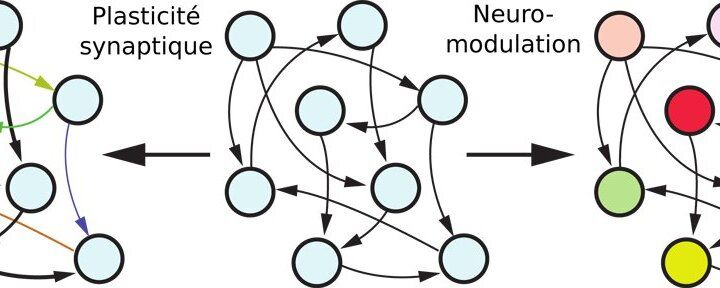A British start-up has developed a new drug much more quickly than traditional methods by using AI.



So what’s Tesla to do? The answers may come in the Battery Day, a forthcoming explainer that could take place in April. The day is expected to be similar in setup to the Autonomy Day in April 2019, where Musk explained to investors the company’s progress on full self-driving capabilities.
What will they show? One of the standout features may be the company’s Maxwell Technologies acquisition. The $218 million deal, announced February 2019, brings in a firm working on exotic technologies like dry electrodes and ultracapacitors. The firm has also identified a pathway to raising battery density to 500 watt-hours per kilogram. Current batteries tend to weigh around 300 watt-hours, but a jump to 500 could enable advanced uses like an electric plane.
Musk confirmed during Wednesday’s call that Tesla is working with Maxwell, while also stating that its ultracapacitor technology is an “important piece of the puzzle.” This exotic technology could transform how energy is managed within the car, and Musk was actually planning to do his PhD at Stanford University on them before he dropped out.

The Defense Advanced Research Project Agency has set its sights on a new kind of drone ship — one that doesn’t contemplate a human ever setting foot on it. Dubbed NOMARS (No Manning Required, Ship), the new ships could feature radical new designs and cut costs by removing any elements normally needed to accommodate people.

While removing the plastic waste that currently contaminates the ocean today will be crucial for protecting marine ecosystems, it is arguably more important that we stop any more plastic trash from entering the ocean. Fortunately for humanity, The Ocean Cleanup, a nonprofit taking on plastic waste in the ocean today, also has a novel solution for stopping plastic from entering it via rivers.
The solution comes in the form of a solar-powered barge named the “Interceptor”. The 24-meter-long (78 feet) vessel resembles a large houseboat and uses a curved barrier to catch waste floating downstream. The trash, much of it plastic, is directed to the “mouth” of the barge — which operates autonomously and silently — from where it rolls up a conveyor belt and is dropped into dumpsters. Apparently, the Interceptor is capable of collecting up to 50 tons of waste a day.
Currently the Klang River in Malaysia is home to one of these Interceptors where it can be seen quietly scooping up trash. The Klang river alone sends more than 15,000 tons annually into the sea, making it one of the 50 most-polluting rivers across the globe. As well as the barge in Malaysia, one has been stationed in Jakarta, the overcrowded capital of neighboring Indonesia, while two others will be sent to Vietnam and the Dominican Republic.

Icefin robot swam more than 1 kilometer to reach Thwaites Glacier’s grounding line.


Amid today’s technological wizardry, it’s easy to forget that several decades have passed since a single innovation has dramatically raised the quality of life for millions of people. Summoning a car with one’s phone is nifty, but it pales in comparison with discovering penicillin or electrifying cities. Artificial intelligence is being heralded as the next big thing, but a cluster of scientists, technologists and investors are aiming higher. In the vernacular of Silicon Valley, where many of them are based, their goal is nothing less than disrupting death, and their story is at the center of “Immortality, Inc.” by science journalist Chip Walter.
The efforts of scientists and investors to defy the aging process—and extend the human life span—are still in their infancy.

Inspired by the functioning of the human brain and based on a biological mechanism called neuromodulation, it allows intelligent agents to adapt to unknown situations.
Artificial Intelligence (AI) has enabled the development of high-performance automatic learning techniques in recent years. However, these techniques are often applied task by task, which implies that an intelligent agent trained for one task will perform poorly on other tasks, even very similar ones. To overcome this problem, researchers at the University of Liège (ULiège) have developed a new algorithm based on a biological mechanism called neuromodulation. This algorithm makes it possible to create intelligent agents capable of performing tasks not encountered during training. This novel and exceptional result is presented this week in the magazine PLOS ONE.
Despite the immense progress in the field of AI in recent years, we are still very far from human intelligence. Indeed, if current AI techniques allow to train computer agents to perform certain tasks better than humans when they are trained specifically for them, the performance of these same agents is often very disappointing when they are put in conditions (even slightly) different from those experienced during training.
Japan is constructing an 18-meter-tall, 25-ton Gundam robot powered by a combination of electric and hydraulic actuators.
Japan has had a robust robot culture for decades, thanks (at least in part) to the success of the Gundam series, which are bipedal humanoid robots controlled by a human who rides inside of them. I would tell you how many different TV series and video games and manga there are about Gundam, but I’m certain I can’t count that high—there’s like seriously a lot of Gundam stuff out there. One of the most visible bits of Gundam stuff is a real life full-scale Gundam statue in Tokyo, but who really wants a statue, right? C’mon, Japan! Bring us the real thing!
Gundam Factory Yokohama, which is a Gundam Factory in Yokohama, is constructing an 18-meter-tall, 25-ton Gundam robot. The plan is for the robot to be fully actuated using a combination of electric and hydraulic actuators, achieving “Gundam-like movement” with its 24 degrees of freedom. This will include the ability to walk, which has already been simulated by the University of Tokyo JSK Lab:
As we all know, simulation is pretty much just as good as reality, which is good because so far simulation is all we have of this robot, including these 1/30 scale models of the robot and the docking and maintenance facility that will be built for it: